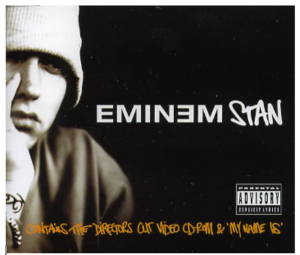
Unforgettable Music Videos of the Early 2000s: A Journey Through Visual Masterpieces
The early 2000s were a golden era for music videos, a time when artists and directors pushed the boundaries of creativity and storytelling. These music videos not only accompanied hit songs but also became cultural phenomena in their own right. From visually stunning spectacles to emotionally charged narratives, these videos captivated audiences and continue to hold a special place in our hearts. Let’s take a trip down memory lane and revisit some of the coolest music videos of that unforgettable era.
Why Music Videos Matter
Music videos have always been an integral part of the music industry, but their importance has only grown in the digital age. Here are some reasons why music videos continue to play a vital role in the world of music:
Visual Storytelling
Music videos provide artists with a platform to tell visual stories that complement their songs. Whether it’s through narrative storytelling or abstract imagery, music videos enhance the emotional impact of a song.
Cultural Impact
Iconic music videos become cultural touchstones that define eras and resonate with audiences. They can shape fashion, trends, and even social movements.
Global Reach
With the advent of the internet and streaming platforms, music videos have a global reach. They allow artists to connect with fans worldwide and transcend language barriers.
Artistic Expression
Music videos offer artists and directors a canvas for artistic expression. They can experiment with visuals, animation, and cinematography to create memorable experiences.
Marketing Tool
Music videos are powerful marketing tools for promoting new music. They generate buzz, attract attention, and help songs gain traction on streaming platforms and charts.
Fan Engagement
Music videos provide fans with visual content to engage with. Fans can dissect videos, uncover hidden meanings, and share their interpretations, deepening their connection to the music and the artist.
This can be compared to listening to a commentator on the radio talking about a match or watching your favorite sports match. Of course, watching the match is much more interesting and exciting, especially if you still have bet app. So it turns out that music videos are also very important, because in addition to listening, you can see the picture and complement the overall impression.
Evolution of Music Consumption
The rise of platforms like YouTube has made music videos a primary mode of music consumption. Many listeners discover new music through videos, making them an essential part of an artist’s repertoire.
Eminem – “Stan” (2000)
Director: Dr. Dre
Eminem’s “Stan” is a haunting and emotionally charged music video that tells the story of an obsessed fan. The video features Dido and follows Stan’s descent into madness as he writes letters to Eminem. The use of multiple frames and perspectives adds to the video’s intensity, making it a powerful visual accompaniment to the song.
Missy Elliott – “Get Ur Freak On” (2001)
Director: Dave Meyers and Missy Elliott
Missy Elliott’s “Get Ur Freak On” is a masterclass in creativity. The video is a visually dynamic explosion of color, dance, and style. With its innovative use of fisheye lenses and surreal imagery, it’s a testament to Missy Elliott’s pioneering approach to music videos.
Gorillaz – “Clint Eastwood” (2001)
Director: Jamie Hewlett and Pete Candeland
“Clint Eastwood” by Gorillaz introduced the world to a virtual band and a unique animation style. The video features the band members, 2-D, Murdoc, Noodle, and Russel, in a supernatural and surreal landscape. It’s a mesmerizing blend of music and animation that left a lasting impression.
OK Go – “Here It Goes Again” (2006)
Director: Trish Sie
OK Go’s “Here It Goes Again” is known for its iconic treadmill choreography. The one-shot video features the band members performing intricate dance moves on moving treadmills. Its simplicity and precision made it an instant internet sensation and a prime example of how a creative concept can elevate a music video.
OutKast – “Hey Ya!” (2003)
Director: Bryan Barber
OutKast’s “Hey Ya!” is a visual tribute to 1960s music programs like “The Beatles Anthology.” The video features André 3000 playing all the band members and embraces a retro, psychedelic aesthetic. Its playful and infectious energy perfectly complements the song’s upbeat vibe.
A-Ha – “Take On Me” (1985)
Directors: Steve Barron and Michael Patterson
While “Take On Me” by A-Ha technically predates the early 2000s, it’s worth mentioning due to its lasting impact. The video is a groundbreaking blend of live-action and hand-drawn animation, creating a timeless and iconic visual experience.
Björk – “Pagan Poetry” (2001)
Director: Nick Knight
Björk’s “Pagan Poetry” is a visually stunning and provocative music video. Known for its intimate and artistic portrayal of the human body, it explores themes of love, pain, and sensuality. The use of unique piercings and visual effects makes it a mesmerizing work of art.
Fatboy Slim – “Weapon of Choice” (2001)
Director: Spike Jonze
“Weapon of Choice” by Fatboy Slim features Christopher Walken dancing and soaring through a hotel lobby. The video is a testament to Spike Jonze’s directorial genius and Christopher Walken’s captivating performance. It’s a delightful and unexpected visual treat.
Johnny Cash – “Hurt” (2002)
Director: Mark Romanek
Johnny Cash’s haunting cover of Nine Inch Nails’ “Hurt” is accompanied by a music video that reflects on his life and legacy. The video, shot shortly before Cash’s death, is a poignant and emotional journey through his career. It’s a testament to the power of music videos to convey deep and personal stories.
Britney Spears – “Toxic” (2003)
Director: Joseph Kahn
“Toxic” by Britney Spears is a visually striking and provocative music video. It features Britney as a secret agent and explores themes of espionage and seduction. The video’s high production values and elaborate set pieces make it a memorable and iconic piece of pop culture.
Final Thoughts
In conclusion, the early 2000s produced some of the most unforgettable and iconic music videos in history. These videos continue to captivate audiences and serve as a testament to the creativity and innovation within the music industry. Music videos are not just accompaniments to songs; they are a form of art and storytelling that enrich our musical experiences and leave a lasting imprint on our cultural memory.


